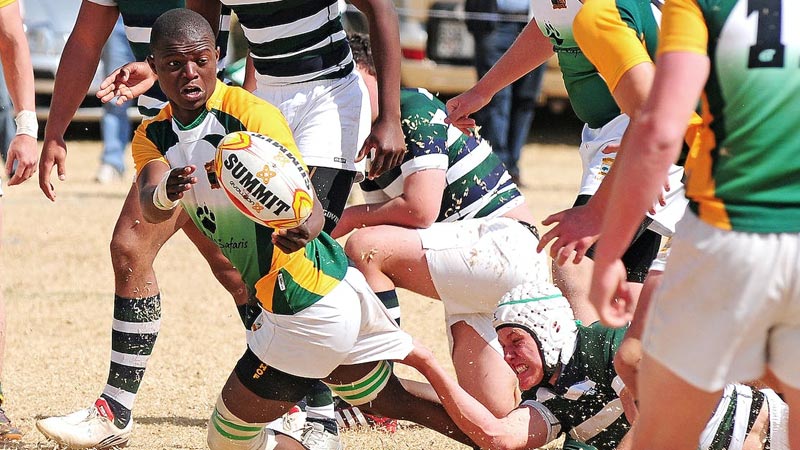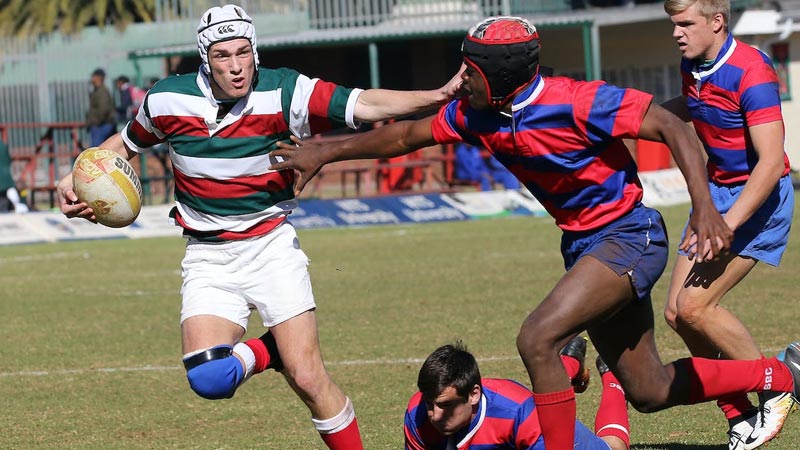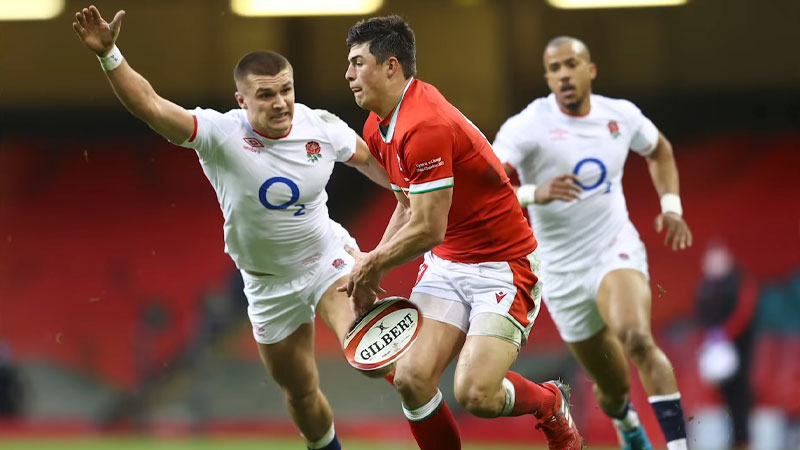In the thrilling world of rugby, a “knock on” is a pivotal concept that can change the course of a game in an instant. It’s a term that echoes across the pitch, embodying both the exhilaration and frustration that make rugby a sport like no other.
A knock-on occurs when a player, whether inadvertently or deliberately, propels the ball forward with their hand or arm, resulting in it touching the ground or another player before being legally caught or touched down.
This simple yet crucial rule triggers a turnover of possession, awarding the opposing team a scrum – a battleground where strategy and strength collide.
Understanding the intricacies of a knock-on is essential for players and fans alike, as it underscores the dynamic and unpredictable nature of rugby.
What Is a Knock-on in Rugby?
A “knock on” in rugby is a fundamental rule of the game that involves a player unintentionally or intentionally knocking the ball forward with their arm or hand, causing it to hit the ground or another player before being caught or touched down.
This rule is crucial in rugby because it has a significant impact on the flow of the game, possession of the ball, and the outcome of matches.
Here are key points to understand about a knock-on in rugby:
Consequence
When a knock-on is committed, it results in a turnover of possession. The opposing team is awarded a scrum, and they gain the “put-in” advantage.
This means they get to feed the ball into the scrum, giving them an opportunity to regain possession and potentially launch an attack.
Scrum

The scrum is a crucial aspect of rugby used to restart the game after minor infringements like a knock-on.
Eight players from each team form a tightly bound pack and push against each other. The scrum-half then feeds the ball into the gap between the two packs.
The objective is to hook the ball back with the feet and gain control of it. The team that wins the scrum gains an advantage and an opportunity to advance down the field.
Common Situations
Knockons can occur in various situations during a rugby match, including:
- When a player fails to catch a pass cleanly the ball goes forward.
- When a player fumbles the ball forward while picking it up from the back of a ruck or maul.
- When a player attempts to intercept or charge down an opponent’s pass or kick and touches the ball forward.
- When a player is tackled and loses control of the ball, causing it to spill forward.
- When a player attempts to score a try but drops the ball over the try line before grounding it.
Exceptions
Not every forward movement of the ball is considered a knock-on.
There are exceptions, including:
- When a player kicks or propels the ball forward with any part of their body other than their arm or hand.
- When a player successfully rips or strips the ball from an opponent, causing it to go forward.
- When a player charges down an opponent’s kick, it goes forward.
- When the ball goes forward after hitting an upright, crossbar, or the referee.
Deliberate Knock On
A deliberate knock-on occurs when a player intentionally knocks the ball forward to prevent an opponent from gaining an advantage.
This is considered unsportsmanlike conduct and results in a penalty kick, and the player may receive a yellow card (sin bin) or even a red card (sending off) depending on the severity of the action.
What Happens in a Knock-On?

In rugby, a “knock on” is a specific rule violation that occurs when a player unintentionally or intentionally knocks the ball forward with their arm or hand, and the ball subsequently touches the ground or another player before it is legally caught or touched down.
Here’s what happens when a knock-on occurs:
Turnover of Possession
When a knock-on happens, it results in a turnover of possession. The team that did not commit the knock-on is awarded possession of the ball. This means the opposing team gains the advantage and the opportunity to attack.
Scrum
The method used to restart the game after a knock-on is a scrum. A scrum involves eight players from each team forming a tightly bound pack and pushing against each other. The scrum-half from the team awarded possession feeds the ball into the gap between the two scrum packs.
Put-In Advantage
The team that was not responsible for the knock-on (the team awarded possession) gets to put the ball into the scrum. This is known as having the “put-in” advantage, and it provides an opportunity for that team to regain possession and launch an attack.
Scrum Outcome
The outcome of the scrum can vary depending on several factors, including the strength and technique of the two scrum packs, the skills of the scrum half, and the strategy of the teams.
The team that wins the scrum typically gains an advantage and has a chance to secure the ball and continue play. In the fast-paced world of rugby, precise adherence to rules is paramount.
Two common rule infractions, the “knock on” and the “forward pass,” can swiftly change the course of a game. Understanding the distinctions between these two violations is crucial for players, coaches, and fans alike.
Below, we present a comparative table that outlines the primary differences between a knock on and a forward pass in rugby:
| Aspect | Knock On | Forward Pass |
| Definition | Ball propelled forward from hand/arm and touches ground or player before caught legally | Ball thrown or passed forward to a teammate |
| Intention | Can be accidental or intentional | Typically unintentional |
| Result | Turnover of possession | Turnover of possession |
| Method of Restart | This leads to a scrum | Leads to a scrum or a lineout (if thrown into touch) |
| Player’s Action | Involves contact with the ball using hand/arm | Involves throwing or passing the ball |
| Consequences of Infraction | The opposing team gains possession and put-in at the scrum | The opposing team gains possession and gets to choose between a scrum or a lineout |
FAQS
Is a knock-on always considered a mistake in rugby?
Yes, a knock-on is generally considered a mistake in rugby as it results in a turnover of possession.
Can a player intentionally knock the ball backward in rugby without it being considered a knock on?
No, intentional backward movement of the ball with the hand or arm is not considered a knock on.
What happens if a player knocks the ball forward but it’s caught by a teammate before it touches the ground or another player?
If the ball is knocked forward but caught by a teammate before it touches the ground or an opponent, play continues, and possession is not turned over.
Can a knock on occur during a lineout in rugby?
Yes, a knock on can occur during a lineout if a player attempts to catch the ball from the throw-in but fails to do so cleanly, causing the ball to go forward.
Is a knock on the same as a forward pass in rugby?
No, a knock on and a forward pass are two different infractions in rugby.
Wrap Up
In Rugby, the concept of a knock on serves as a microcosm of the sport’s essence: a thrilling blend of skill, strategy, and raw physicality. It is a rule that can tip the scales of a match, turning moments of brilliance into frustration, and vice versa.
The knock on encapsulates the unforgiving nature of rugby, where precision and control are paramount. Understanding this rule is not just about the technicalities; it’s about embracing the heartbeat of the game.
It adds an element of unpredictability and excitement, reminding us that in rugby, as in life, anything can happen in a split second, making it a sport that continues to captivate and unite enthusiasts around the world.







